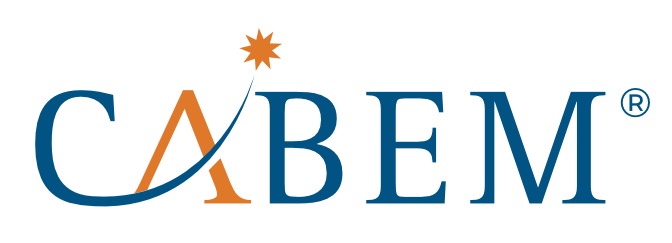Maintaining Quality Standards Through Medical Credentials
A crucial aspect of the healthcare industry is the maintenance of high standards of safety in the medical profession. Medical credentialing verifies that nurses and doctors are properly trained and certified. Credentialing provides evidence of a medical professional’s medical license, preceding education, experience, and training. It is the process of granting a certificate or license through the assessment of an individual’s knowledge, skill, or performance level.
Credentialing refers to a process that consists of two parts in the healthcare industry, credentialing and privileging. Credentialing verifies competency, which is demonstrated by education, training, licensing, and work experience. Privileging is the granting of approval for a healthcare provider to perform certain procedures based on the demonstration of a particular competency.
Since credentialing in the healthcare industry is the process that informs the public whether doctors and nurses have the proper training and experience to practice medicine and see patients, it is critical that the credentialing process is understood and done effectively. This article will take a closer look at how credentialing works, the benefits of credentialing, and how the commitment of resources, such as credentialing software, may be necessary for efficient and accurate provider credentialing.
Why is Medical Credentialing So Important?
Medical credentialing gives patients the reassurance needed so they feel confident that they are dealing with a healthcare professional that is certified, licensed, and equipped with the latest knowledge needed to provide the highest standard of care. Without this valuable process in place, there would be no oversight for the healthcare industry and quality and standards would not be guaranteed.
There are more than 6,200 hospitals in the United States operating on a collective budget of more than $1 trillion, according to the American Hospital Association. With more than 36.5 million people being admitted into a U.S. hospital each year, it is easy to understand the importance of credentialing in the medical field.
How does Medical Credentialing Work?
There are many aspects of medical credentialing: training, education, residency, licenses, qualification, work history, and certificates. A healthcare professional that is starting a new practice or changing states, must go through the process each time, regardless of how long they have been working as a qualified healthcare professional.
There are typically three phases of the credentialing process in the healthcare industry.
- Credentialing – This is the process in which the physician’s qualifications and credentials are verified. This process is also called primary source verification.
- Privileging – Based on verified credentials, permission is given to a physician to perform specific services at a healthcare institution.
- Enrollment – In this phase, the physician is now able to enroll for payment and bill for services. This often includes working with insurance companies.
Healthcare providers can not work with patients until the credentialing process is complete and approved. This assures that all patients receive care from professionals with the proper education, training, and experience. If an organization allows a non-credentialed individual to work, even if they are in the process of getting their credentials, it is putting itself at risk.
Medical students, residents, and fellows do not require credentialing as long as their work does not go outside of the scope of their training program because they are under the guidance of credentialed professionals.
Once the credentialing process is complete, a provider enters into a contract with an insurance company. This allows practices to bill and receives reimbursement for services. Without the appropriate credentials, healthcare professionals are unable to carry out treatment and receive reimbursement from insurance companies.
Re-credentialing is also an important part of the process. Providers and practitioners must always make sure their skills are up to date in an ever-changing medical industry. Healthcare professionals must proactively keep their credentials up to date or they risk suspension.

What are the 4 Benefits of Medical Credentialing?
- Professionalism – Having the proper, up-to-date credentials reassures patients and verifies a medical professional’s experience and merit. It is a crucial aspect of maintaining high standards of safety. In order to thrive in the healthcare industry, medical credentialing cannot be ignored.
- Builds Trust and Confidence – Patients that trust that doctors are more likely to follow a doctor’s orders, take a needed medication, or undergo a necessary procedure. They are also more likely to be open and honest about their medical history and concerns. When a patient lacks confidence in a doctor, he or she is likely to search for a more competent medical professional. Having the right credentials means better health outcomes for patients. It lets them know that their doctor is committed to maintaining the highest standards. It also helps build an organization. Nurses and doctors want to work for an organization with fully medically credentialed staff. They want the prestige and confidence in knowing that their organization is well-trained and up to speed in the latest trends and medical knowledge.
- Insurance reimbursement – Credentialing is a must in order to get reimbursed from insurance companies. Private health insurance, as well as Medicare and Medicaid, must see proof of medical credentialing before allowing that medical professional to engage with patients.
- Reduce medical errors – By properly credentialing every practitioner in medical practice, it cuts down on errors such as miscommunication, prescription orders, adverse drug events, incomplete patient medical records, and overly complex and mismanaged workflow patterns. According to a recent study by Johns Hopkins, more than 250,000 people in the United States die every year because of medical mistakes, making it the third leading cause of death after heart disease and cancer. This is why credentialing for medical professionals is paramount. This statistic is alarming, yet organizations continue to use slow, manual, and paper-based credentialing processes that can’t always guarantee transparency of a provider’s credentials. Patient safety and an institution’s reputation are at risk. Electronic credentialing helps eliminate errors and allows organizations to screen practitioners in real-time.
Credentialing ensures that healthcare individuals and organizations adhere to the letter of the law. Assessment and confirmation of the qualification of professionals help organizations save themselves from liabilities, fiscal loss, incompetent healthcare providers, compliance violations, and unwanted lawsuits.
How Can an Automated Software Credentialing System Help?
Many organizations struggle to maintain a full and honest commitment to their verification process because of the time and resources required. Additionally, practitioners need to have their credentials renewed every two years.
Historically, credentialing was a manual process. An automated software program provides management of this complex set of tasks. It can help streamline the process and work becomes more efficient. Having a credentialing platform also acts as a single source of truth for all data and credentials, avoiding any duplicate or conflicting information. In the end, credentialing provides organizations with a competitive advantage and it helps to attract and retain members. It improves the quality of service, product, and client interactions in any industry.
CABEM offers a way to make credentialing easier. As your credentialing requirements evolve and grow, consider the benefits of implementing a system that allows you to track, renew, and monitor the necessary credentials of your team members automatically with software. CABEM has built a program that solves this need, called the Competency Manager. If you would like to see a product demo of our competency and credentialing software system or ask any questions, visit our website.

